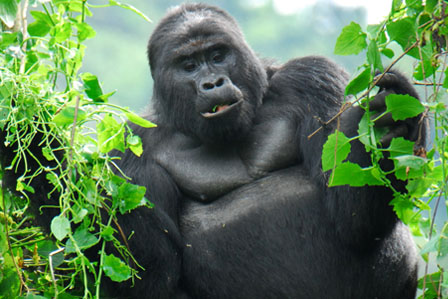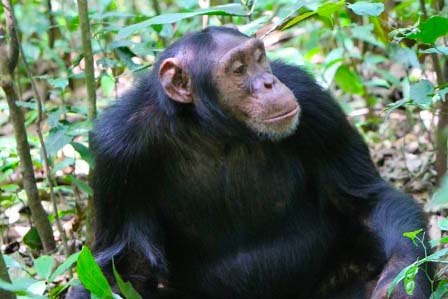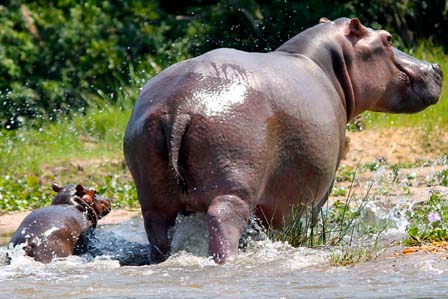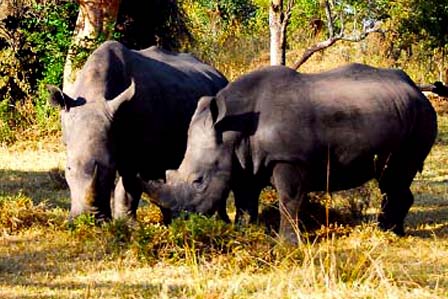Topis - Under the Antelope species
The Topi is in the family of the antelopes. With lyre-shaped thick and heavily ringed horns about 21inches long. When seen physically, topis have dark-mask coloration on their face and reddish brown bodies with dark purple patches on their upper legs, elongated heads with a hump on the base of the neck. They are about 150 - 200cm to the shoulders. You can distinguish their sex from the size and colour because the male tend to be larger and darker than the female. In motion, the topis travel at a jog and are one of the fastest antelopes in Africa.

The topis are usually numerous or absent in an area. They love the grasslands and therefore usually migrate between pasture like treeless plains, savannas, open grasslands and stay along the edge so as to use the shed in hot weather. In most cases they are densely populated in areas where the green plants last into the dry season, usually near water. Topis take small bites at a fast rate as they scavenge for food and if the green vegetation is plenty for them, they can survive without water and usually drink water when feeding on dry or no grass. They usually stand at vantage points like termite mounds to look at their surroundings.
The organization of the topis is made up of territories established by the male. The female are then attracted together with their offspring in herds, while in a territory the function of the female is to be the resident male's harem. In addition, a male and his females defend their territory therefore a herd being closed. A female only joins a herd if she is allowed. The topis live in flocks or sometimes in loosely organized herds of 15-20 and in some places they are as many as hundreds, thus their flexible social structure. Usually in more densely populated areas as the topis move across plains, animals come together in huge numbers indiscriminately. The male form small temporary territories in which they shepherd the females, this usually happens in the sedentary population, even when they stop for a few hours.
The female have a specific time of the year for calving. When the male form groups, the most dominant take up the center and the less dominant take up the boundaries of that cluster. The estrous female in a group or alone then enter the group where they mate with the male in the center. The less dominant male may get a chance of reproduction if they are close to the water. The female therefore fight to mate with the dominant male since they come into estrous for only one day in a year.
The female also act or behave like the dominant male in their absence, to protect their territory. Their fidelity to a territory can last up to 3years. They are also able to stall the labor process if they suspect immediate danger. The topis spend most time mingling with other animals like the wildebeests, zebras, ostriches and gazelles. Predators of topis include lions, spotted hyenas and jackals that usually target the newborns, though the topis are known to have a low predation rate when other species are present.
Most Popular Uganda Safaris
© 2025 African Adventure Travellers. All Rights Reserved.



















